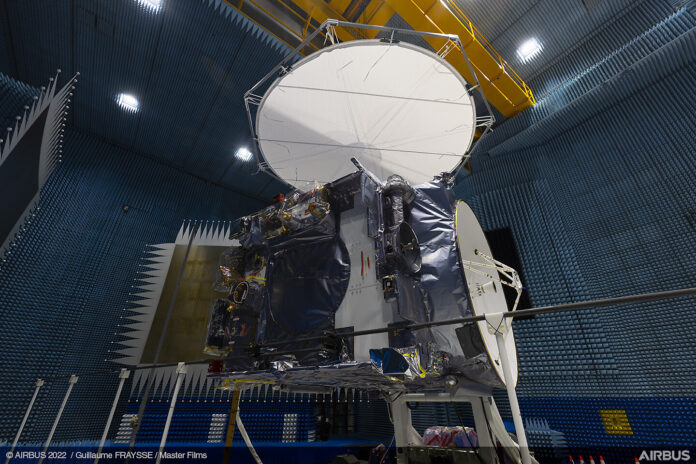The European Space Agency’s (ESA) Jupiter Icy Moon Explorer (JUICE) spacecraft is scheduled to launch on April 13, 2023, to explore Jupiter’s icy moons in search of water. JUICE will travel 5 billion kilometers from Earth and encounter extreme temperatures, intense radiation, and decreasing solar energy during its journey.
JUICE will use large solar arrays the size of a badminton court to generate the 800 watts of power needed to operate its ten scientific instruments. These instruments will provide valuable data on Jupiter’s icy moons, including Europa, Ganymede, and Callisto. The mission is crucial in understanding how the harsh environment of Jupiter’s icy moons shaped and continues to shape the conditions on their surface.
The Airbus technology powers the JUICE mission, with the company manufacturing the panel structures and deployment mechanism. JUICE’s thermal control system uses Multi-Layer Insulation (MLI) to moderate the external temperature during the spacecraft’s closest approach to the Sun and limit heat leakage in the cold Jupiter environment.
A navigation technology called “EAGLE” has been developed for JUICE, which uses images taken by the Navcam camera in real-time to independently refine the viewing angle of its instruments. This technology allows JUICE to process images on board and adapt the probe’s trajectory before flying by the moons.
JUICE’s sensitive instruments, including a magnetometer, are designed to record data about Jupiter’s magnetic field. To ensure accuracy, JUICE must be “squeaky clean” in that its own presence and emissions do not disturb the instruments. The mission’s complexity requires accurate navigation, and EAGLE technology allows JUICE to process images on board to adapt the probe’s trajectory before flying by the moons.
JUICE’s mission is crucial in understanding how the harsh environment of Jupiter’s icy moons shaped and continues to shape the conditions on their surface. The mission’s success is key to being self-sufficient in energy generation and storage.
JUICE will encounter extreme conditions, including intense radiation and decreasing solar energy. The probe’s thermal control system and large solar arrays will ensure it can function in these harsh environments. The solar arrays are the size of a badminton court and are critical to the success of the mission. The Airbus technology powering JUICE’s mission will help it navigate the complex conditions and operate its instruments accurately.
JUICE’s mission is essential in increasing our knowledge of how the harsh environment of Jupiter’s icy moons shaped and continues to shape the conditions on their surface. The mission’s success will be critical in being self-sufficient in energy generation and storage. The launch of JUICE on April 13, 2023, marks an exciting milestone in space exploration, and we eagerly await the data and insights that the mission will bring.










